The largest fortress in Asia. Fort Galle in Sri Lanka (29 photos)
The fortress (fort) is located in the south of Sri Lanka in the city of Galle. This city was known in ancient times as a center of maritime trade: it is noted that even Greek and Roman merchants came here to buy local gifts. During the colonial era, European states could not ignore such a tasty morsel, because Halle did not have any defense system. 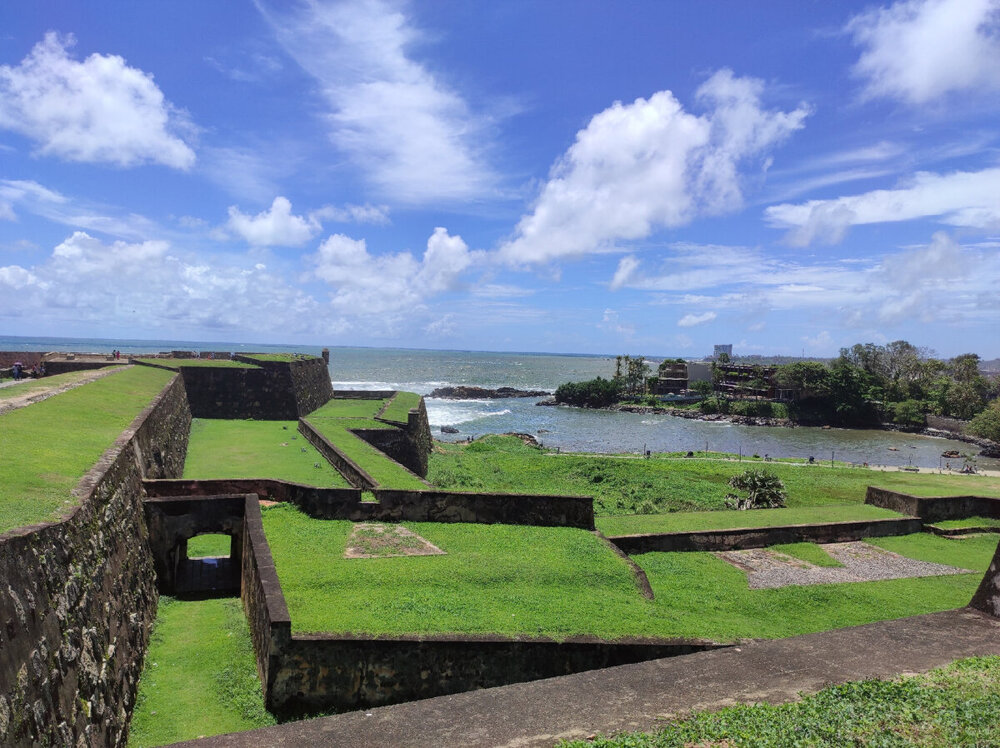
At the beginning of the 16th century, the Portuguese had already settled in the city, who were then replaced by the Dutch and the British, but first things first. I will pay more attention to the description of this unique fortress, which is included in the UNESCO World Heritage List. I will give a brief history, because without access to local archives it is hardly possible to describe all 500 years of modernization of the fortress and the change of its owners.
I got to the fortress on my own from the city of Hikkaduwa on a local regular bus. Buses run frequently and cost 100 rupees (about 30 cents). 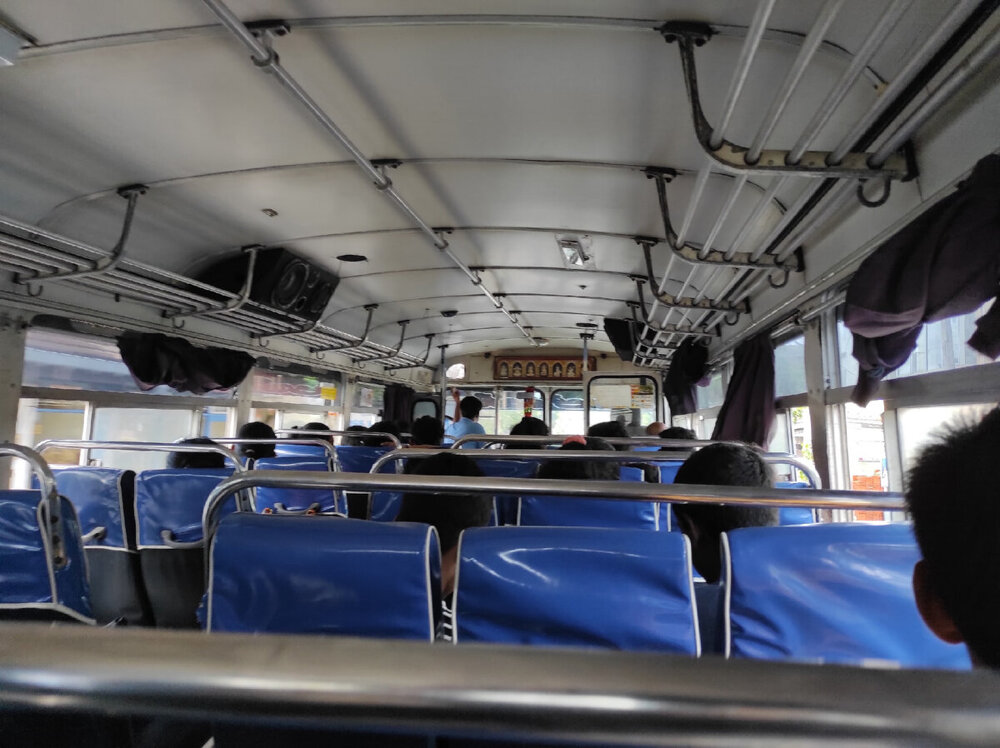
The fortress occupies a fairly large area; behind its walls there is an entire microdistrict of the city. It is considered the largest colonial fortress in Asia. The outer walls of the fortress from the city side. 
On the city side, the fortress has three bastions with their own names: Starry, Lunar and Solar. A bastion, roughly speaking, is a forward fortification that allows firing along the fortress wall. Bastions located next to each other cover each other with crossfire. Observation post on the bastion. You can clearly see how the bastion is moved forward relative to the fortress wall. 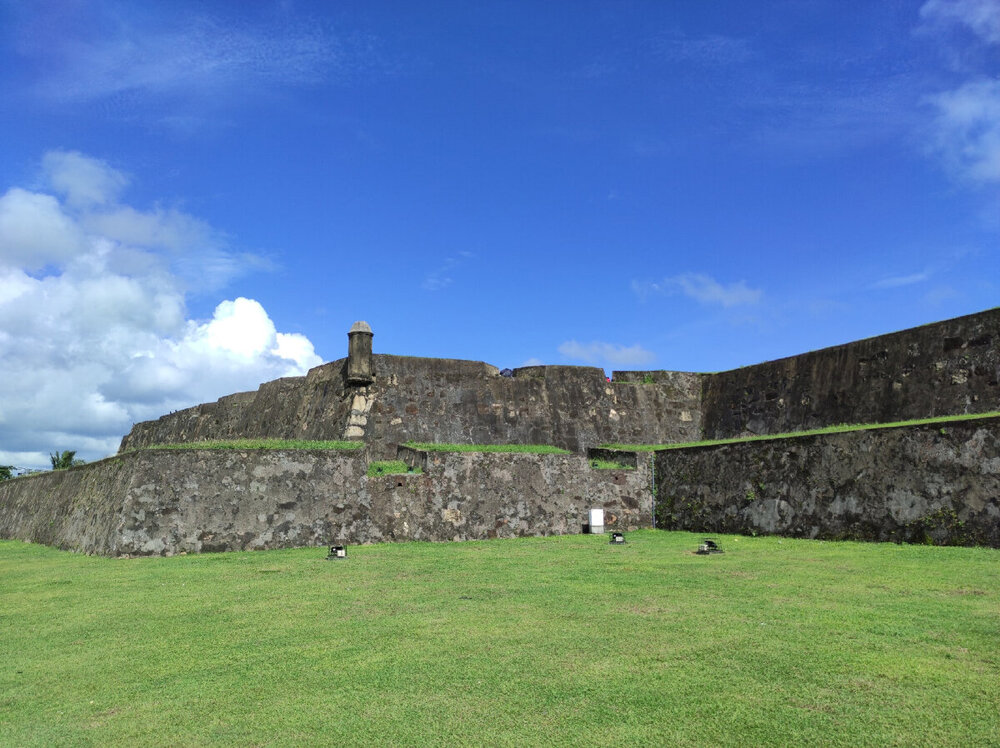
View from the fortress wall to the international stadium where cricket is played. 
Observation post. 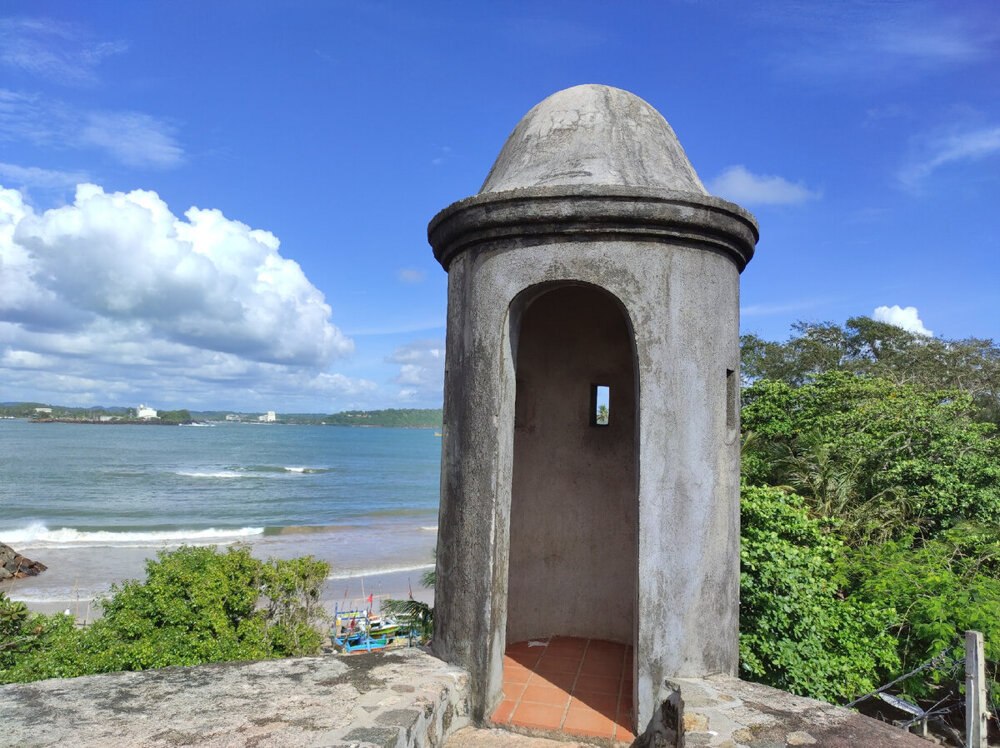
Fortress diagram. The bastions on the city side are at the top of the diagram. 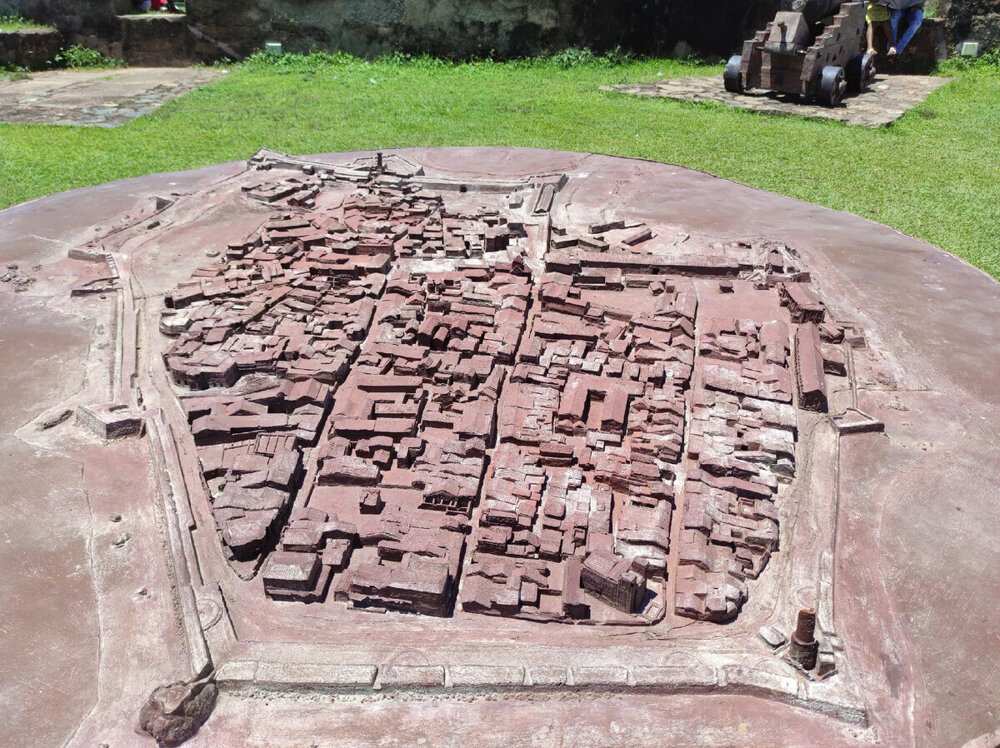
View from the Solar Bastion to the Lunar Bastion (the clock tower is visible). The walls of the fortress are made of granite and coral, but this is a late Dutch and English building; initially the fortress was made of wood and earth. 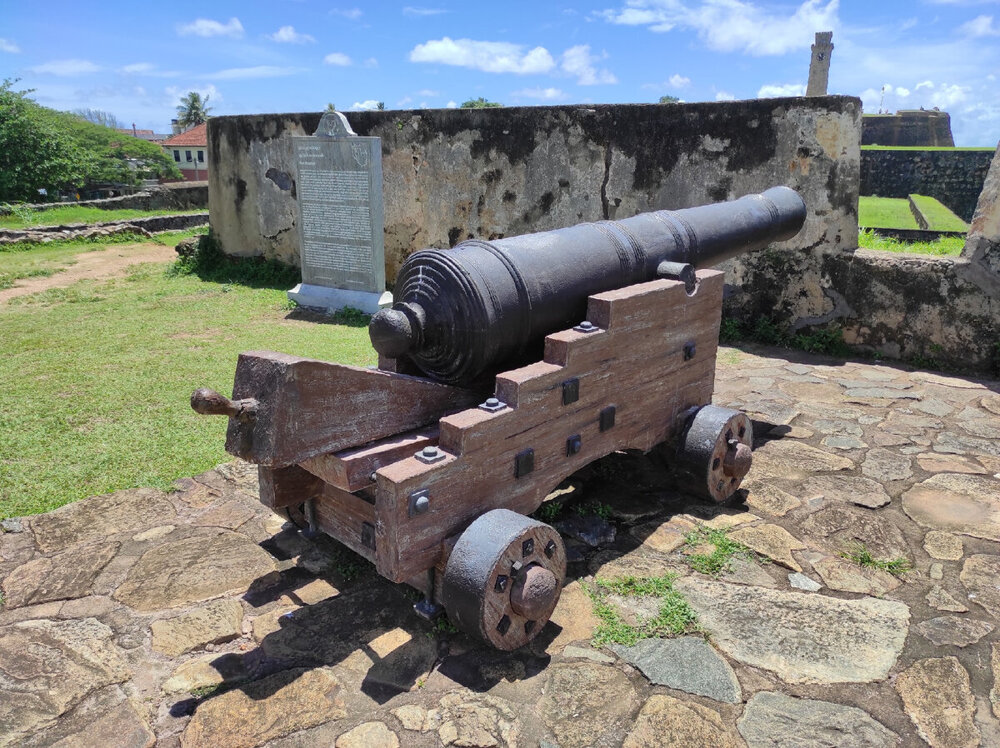
The old clock tower at the Lunar Bastion. 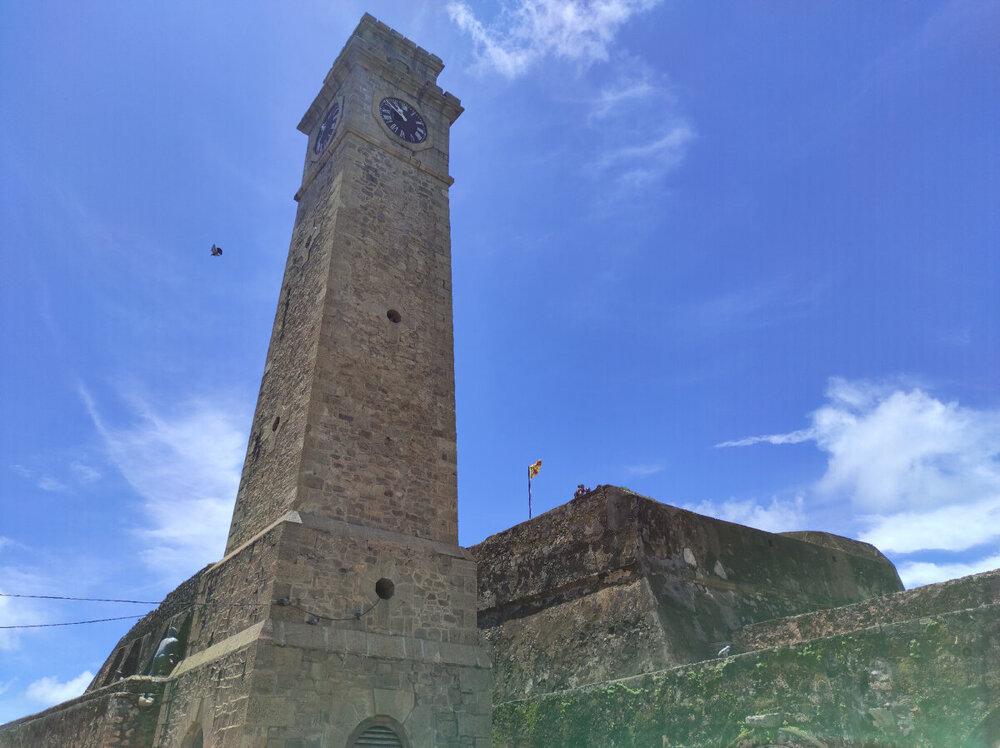
The Portuguese erected the first defensive buildings in Galle back in the 16th century. It is noted that initially the fortress was built almost from “palm trees and clay,” but later it was reinforced with three bastions and a small separate fortification to protect the approaches from the sea. At that time, the Portuguese did not need a full-fledged fortress, since no major battles were planned. Scheme of fortifications for 1640. At the top, the fortress wall and three bastions (in the form of semicircles) are highlighted in black; at the very bottom of the diagram, a fortification for sea control is marked with a black rectangle. This fortification was later included in the fortress wall, I will show it below. 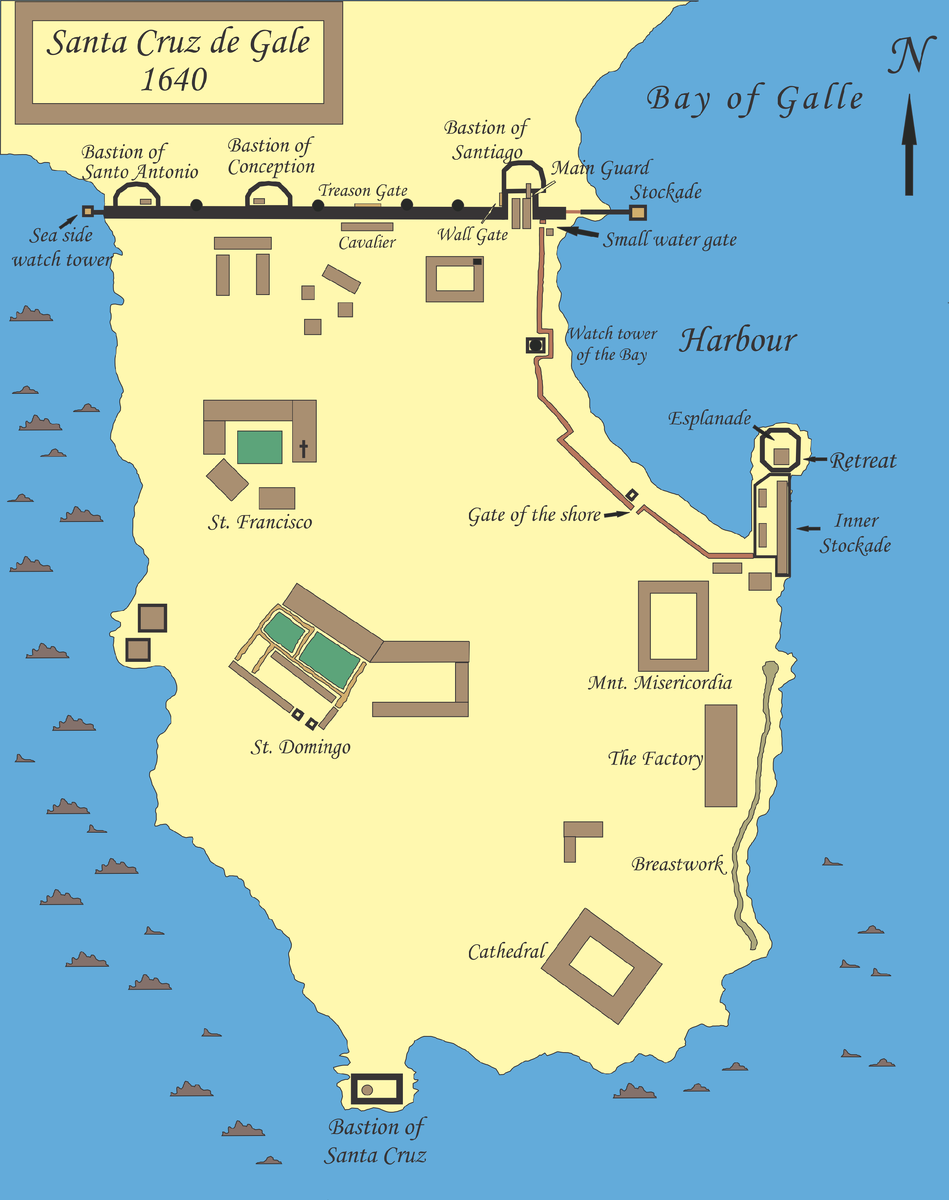
View from the Lunar Bastion to Solnechny. It can be seen how very different the later bastions are from the original Portuguese fortifications. Under the Portuguese, there were simple earthen ramparts, and under the Dutch and British, the bastions turned into a two-level stone fortress. 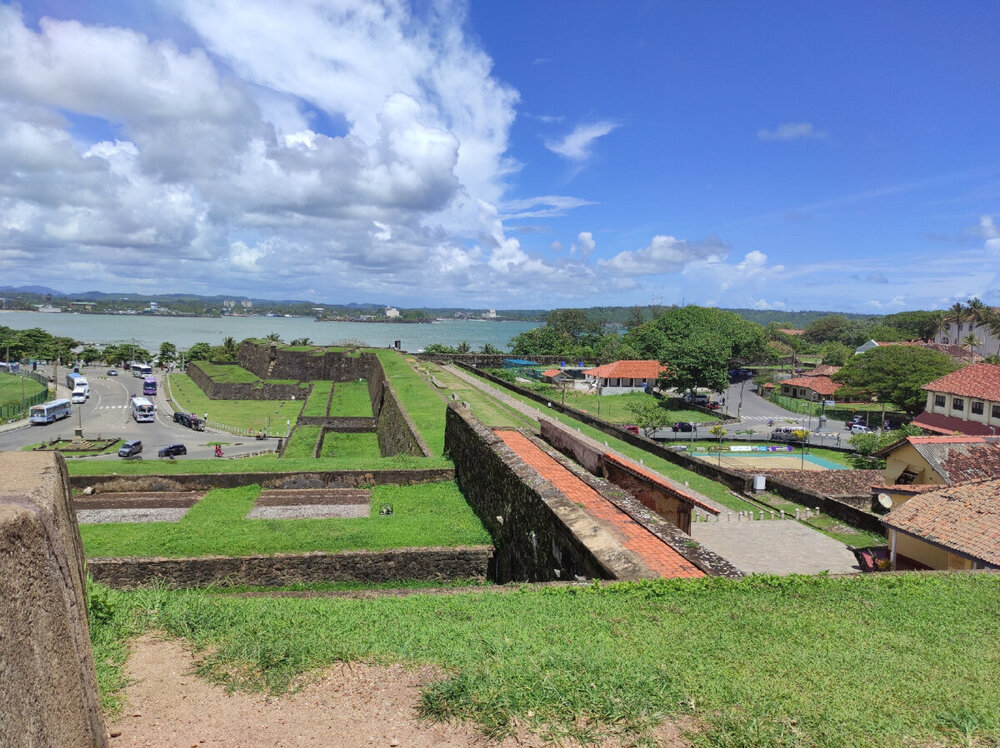
In the 17th century there were many who wanted to own Sri Lanka, so the earthworks soon had to change hands. In 1640, the Dutch took the fortress by storm and, appreciating the importance of the city of Halle, they immediately began to modernize the fortifications. Moreover, during the fighting, the Portuguese earthen bastions were severely damaged.
The fortress was modernized by the Dutch until the beginning of the 18th century. View of the Lunar Bastion gun position. 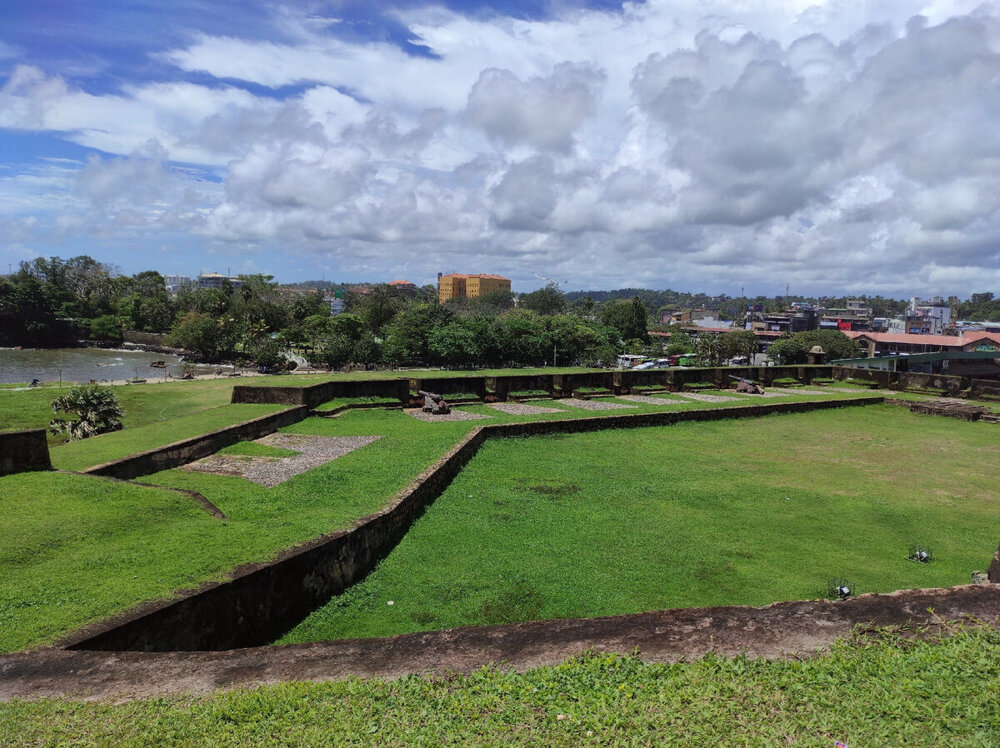
Most of the guns in the fortress are replicas, but this one looks like a real preserved gun. 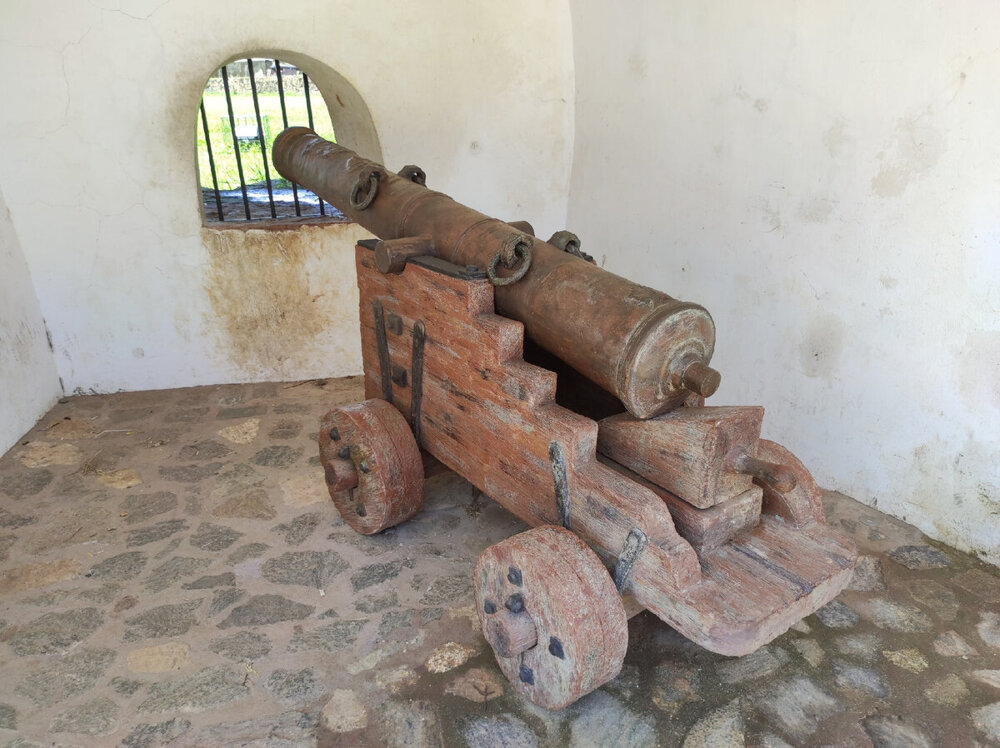
A gallery that leads to the lower tier of the bastions. 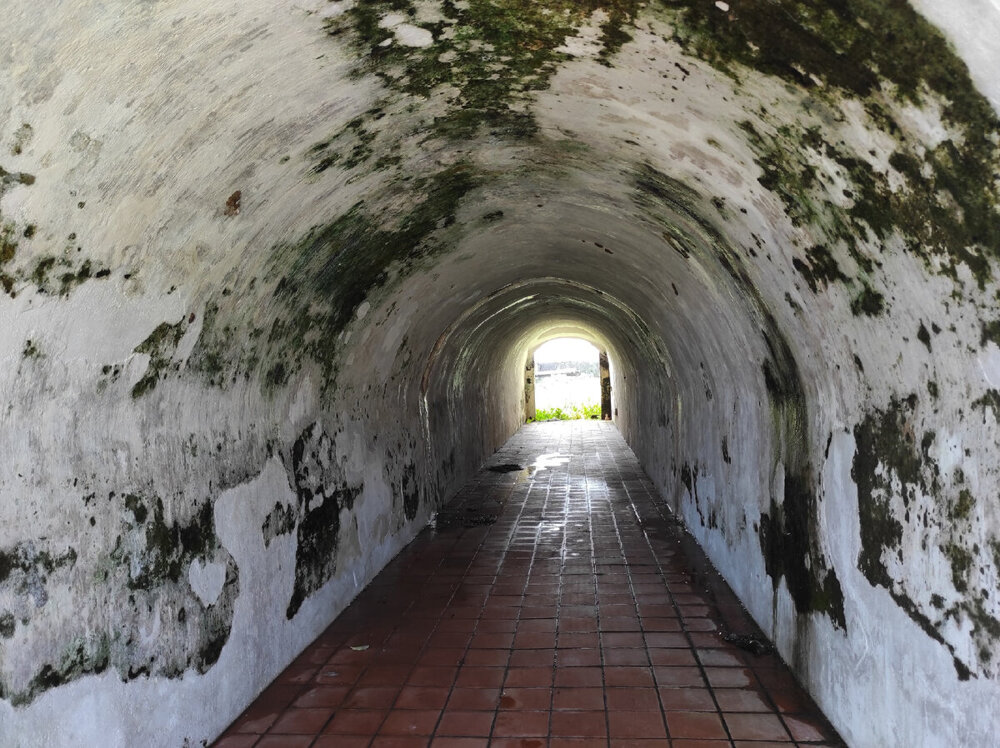
The Dutch also significantly strengthened the fortress on the sea side. Full-fledged stone walls and small bastions appeared along the coast, where coastal guns were located on such foundations. 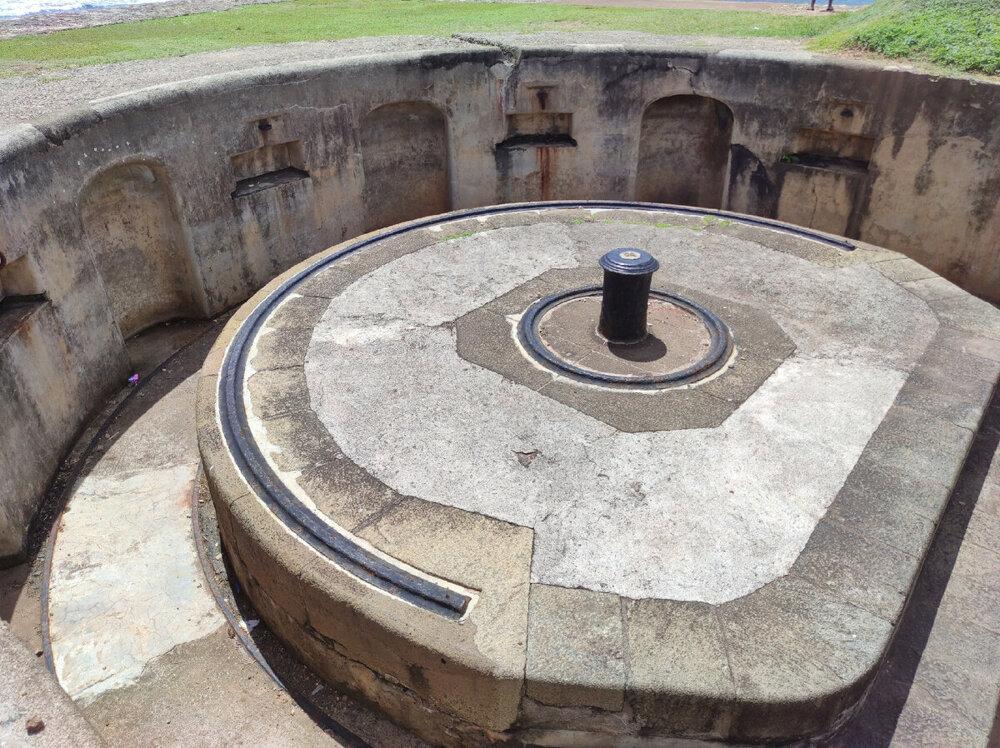
Coastal gun positions also have protected ammunition magazines. 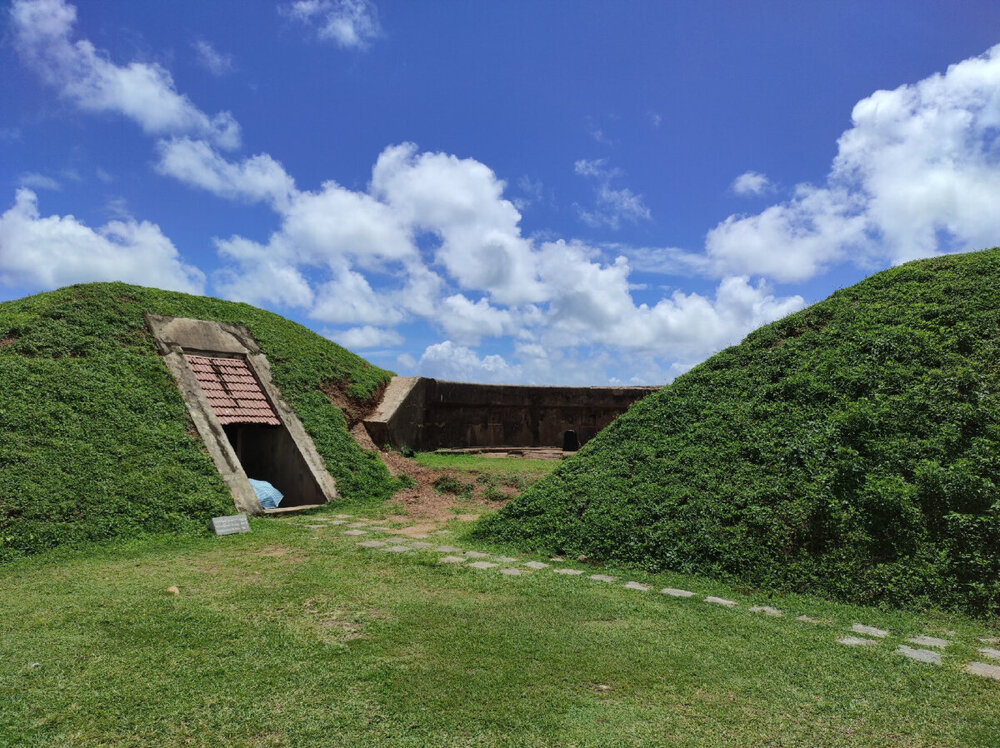
Beautiful lizards that look like little dragons run around the cellars. 
One of the restored museum cellars with an exhibition. 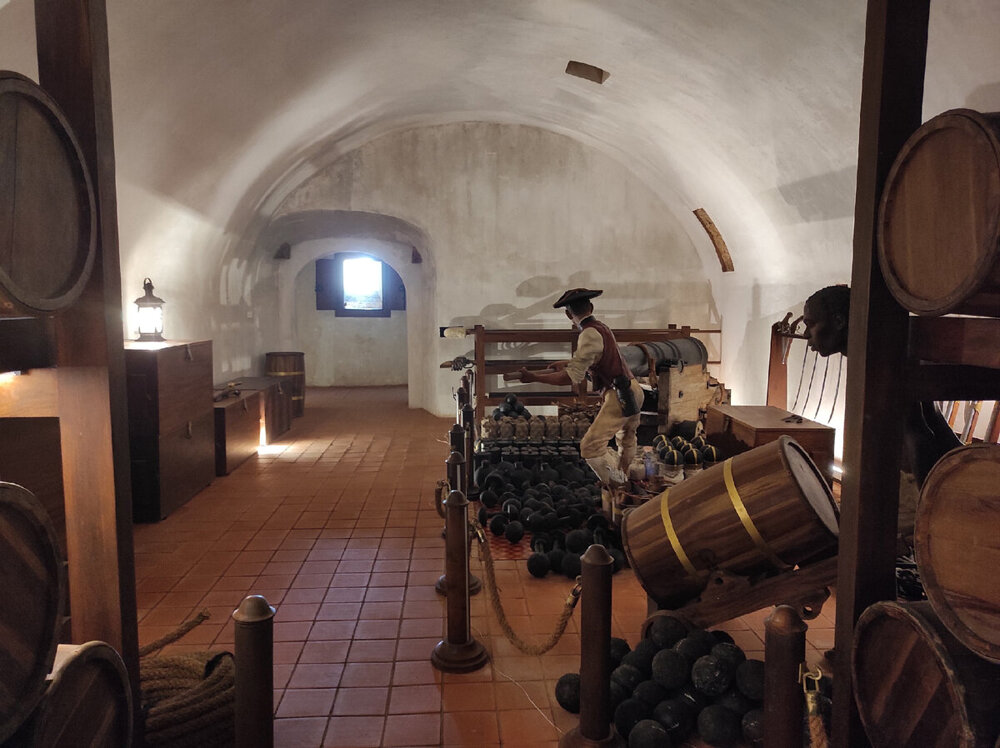
The fortress wall from the sea and a view of another small bastion for a gun. 
Despite the modernization of the fortress, the Dutch also failed to gain a foothold in Sri Lanka at all. In 1796, the British took possession of the city and the fortress; they continued to strengthen the fortress until the end of the 19th century, but by that time Halle no longer had an important defensive significance. However, during the Second World War, anti-aircraft guns were installed on the walls of the fortress. Remains of an English building that was used to signal approaching ships. Located in the center of the former Dutch bastion. 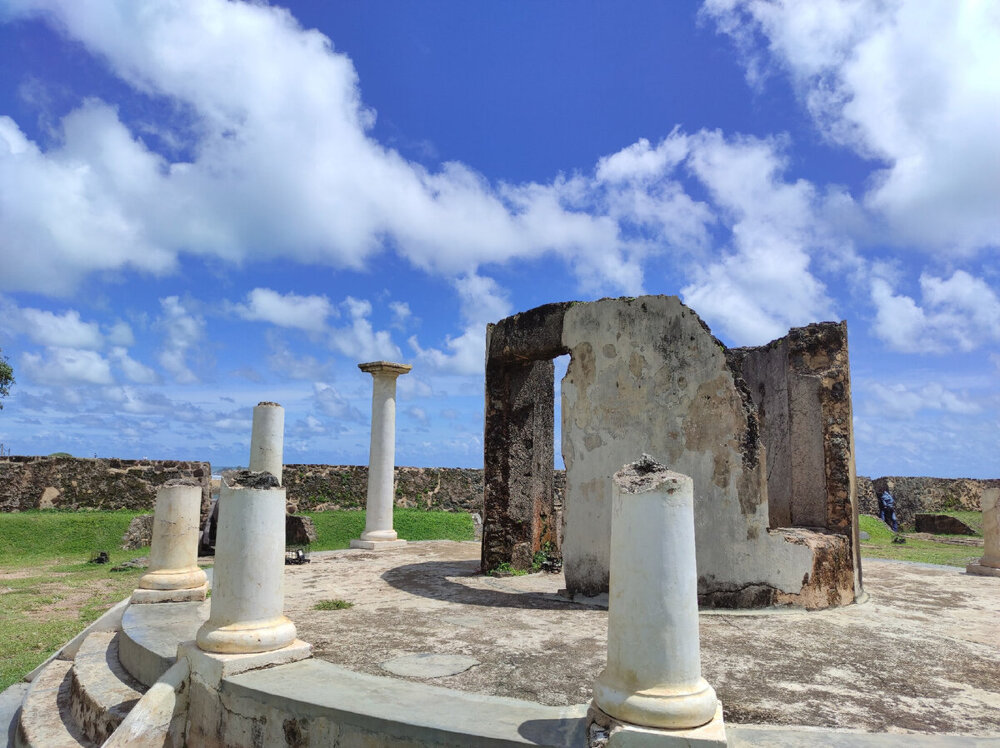
Dutch bastion Flagrock. It is notable because it was built on top of a separate Portuguese fortification, the same one I described in the 1640 diagram. It is believed that in 1943 the British installed 20-mm Oerlikon anti-aircraft guns here. This is the difficult fate of a small fortification: first it was a Portuguese forward post for sea control, then part of a Dutch fortress, and then a British anti-aircraft position of the Second World War. 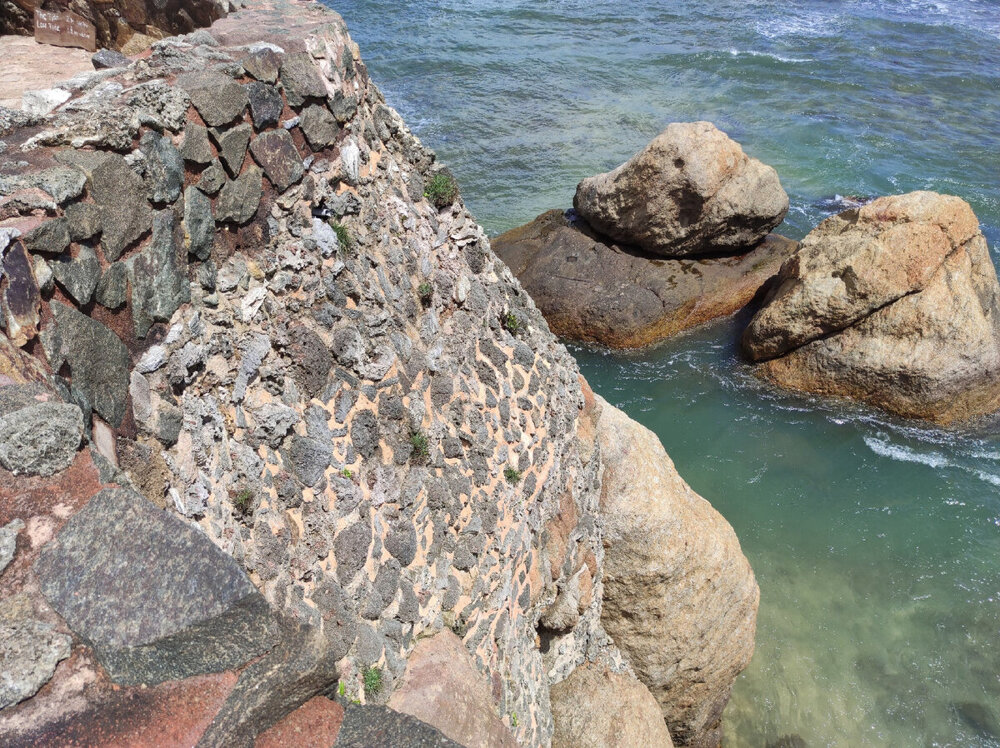
Continuation of the sea wall and view of the lighthouse. 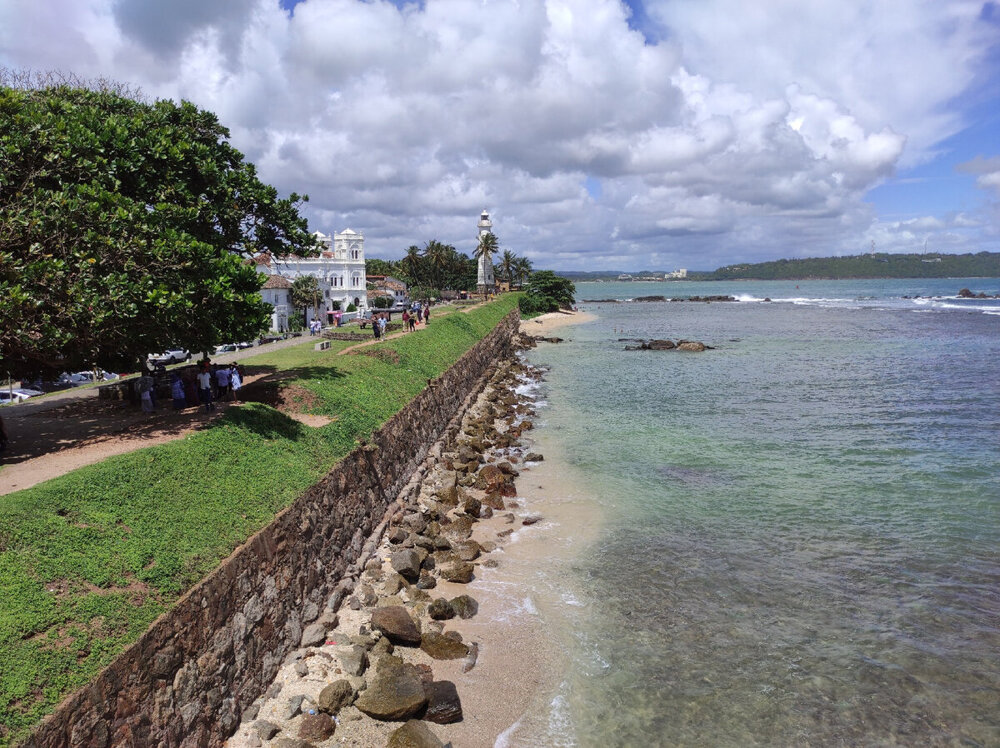
The oldest lighthouse in Sri Lanka. Originally built in 1848, but was completely rebuilt in 1939. 
In this part of the fortress there is a small park with a beach where monitor lizards often come. 
Few views of the area, which is located on the territory of the fortress. This is just a different world: there is not much Asian flavor here, and the buildings are made in the European style by the Dutch and British. 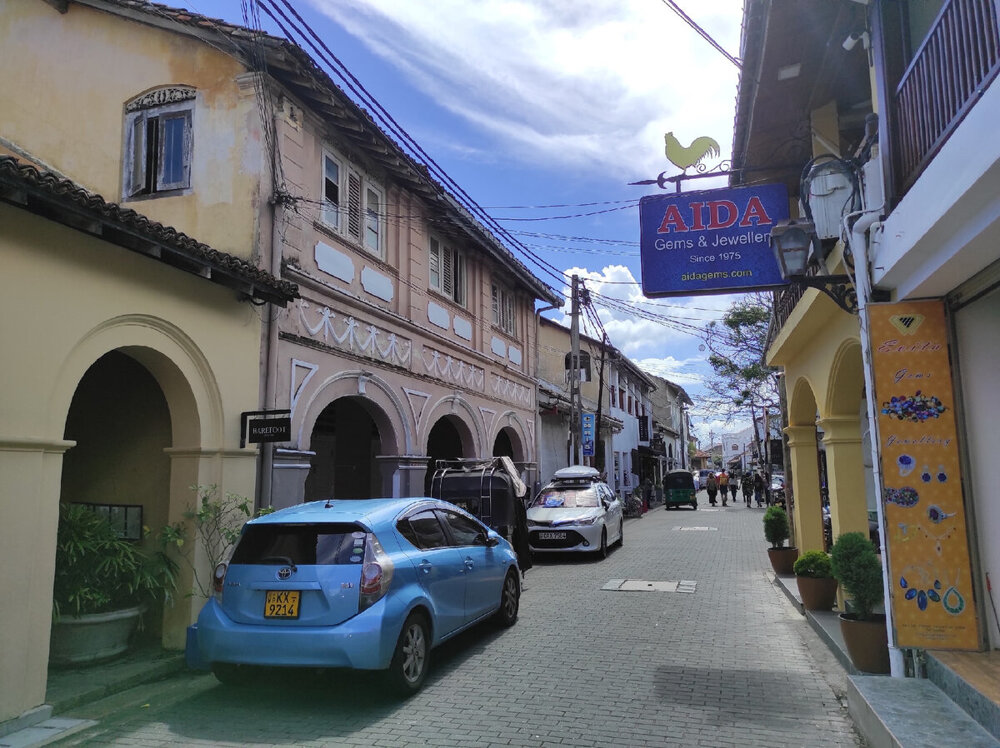
Outside the fortress walls, barkers, taxi drivers and market sellers literally run after tourists. And inside the fortress it is quiet and calm, although it is all one city. 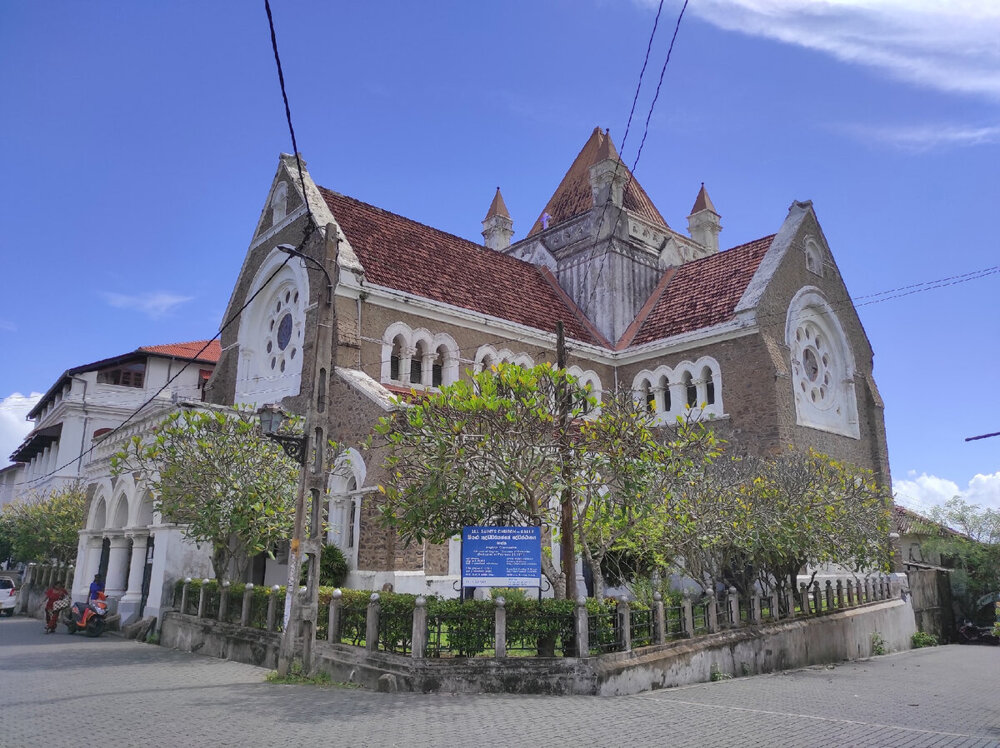
Street names have been preserved from colonial times. The English names are "Tserkovnaya" street and "Royal" street. 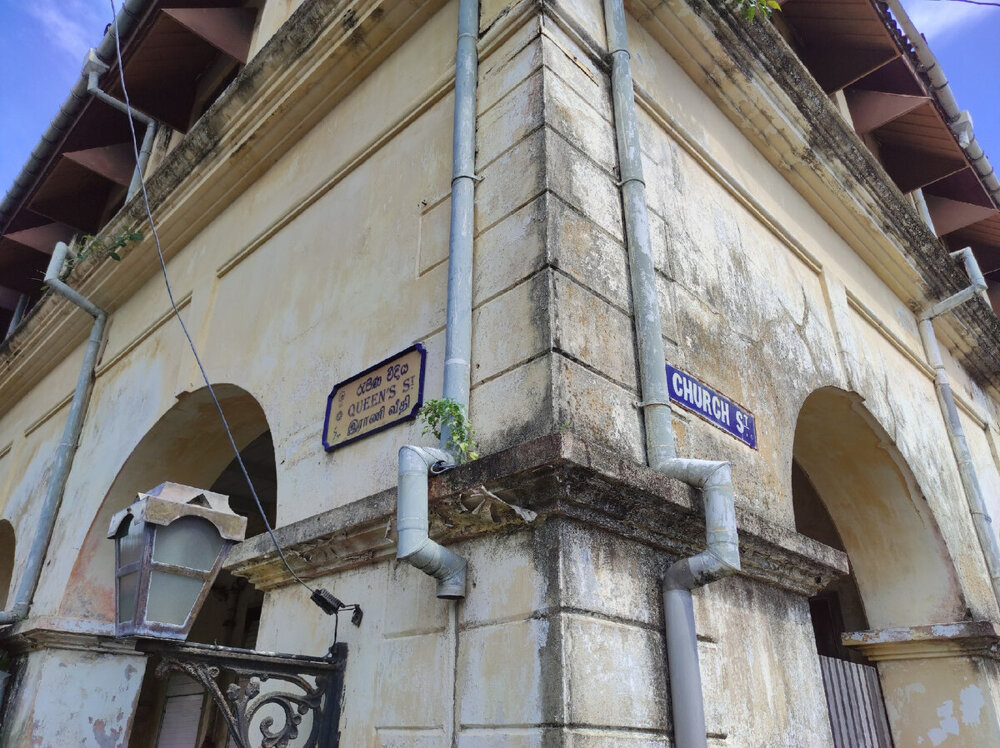
Old entrance to the fortress. The coat of arms and the inscription "VOC 1669" have been preserved. VOC is the Dutch abbreviation for Vereenigde Oostindische Compagnie, which means Dutch East India Company. 
Exterior view of the fortress wall and observation post. On December 26, 2004, the city of Galle was heavily damaged by the tsunami, but the fortress survived. 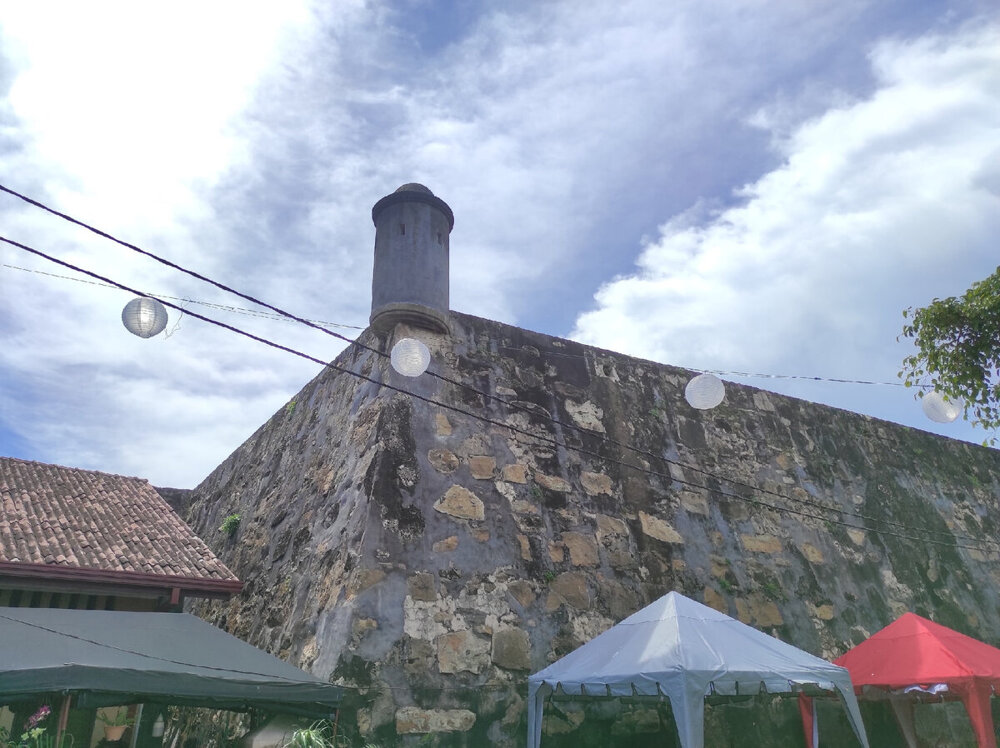
There are many transport routes through the city of Galle, so getting to it is quite easy even from the far corners of Sri Lanka.






















